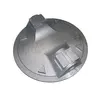Mobile:+86-311-808-126-83
Email:info@ydcastings.com
Analyzing the Expenses Associated with Aluminum Casting Processes and Techniques
The Cost of Casting Aluminum A Comprehensive Overview
Aluminum casting has become an essential process in various industries, including automotive, aerospace, and consumer goods. The cost of casting aluminum can vary significantly depending on several factors, including material prices, production techniques, and labor costs. Understanding these components is crucial for manufacturers aiming to optimize their production processes while maintaining quality and efficiency.
One of the primary cost elements in aluminum casting is the price of raw aluminum. The cost of aluminum tends to fluctuate based on global market trends, driven by supply and demand dynamics, tariffs, and production costs from primary aluminum manufacturers. When aluminum prices rise, the overall expense of casting increases, which can impact the pricing of finished goods.
Another significant factor is the casting method employed. There are various casting techniques, including sand casting, die casting, and investment casting, each with its own cost implications. For instance, while sand casting is generally more cost-effective for low-volume production due to its simpler setup, die casting is preferable for high-volume production as it allows for greater precision and faster cycle times. However, the initial setup costs for die casting can be substantial, often requiring expensive molds.
cost of casting aluminum

Labor costs also play a critical role in determining the overall cost of aluminum casting. Skilled labor is required for both the casting process and post-casting operations, such as finishing and quality control. Regions with lower labor costs may offer a competitive advantage, but this is often balanced against factors like transportation and operational overhead. Thus, many companies seek to find an optimal location for their casting operations to manage these labor expenses effectively.
Additionally, environmental regulations and sustainability efforts can influence casting costs. Implementing eco-friendly practices often requires investments in technology and processes that reduce emissions and energy consumption. While these initiatives may increase short-term costs, they can lead to long-term savings and enhanced brand reputation.
In conclusion, the cost of casting aluminum is shaped by a variety of interrelated factors, including raw material prices, casting techniques, labor costs, and environmental considerations. By understanding and managing these elements effectively, manufacturers can optimize their operations, control costs, and ensure competitive pricing in the ever-evolving aluminum market. As demand for aluminum continues to grow across different sectors, staying informed about these dynamics will be essential for success in the industry.
-
Understanding Metal Casting TechniquesNewsApr.02,2025
-
Understanding Exhaust Manifolds for Enhanced Engine PerformanceNewsApr.02,2025
-
The World of Metal FabricationNewsApr.02,2025
-
Key Components for Pump and Turbo EfficiencyNewsApr.02,2025
-
Essential Tools for Automotive Maintenance and RepairNewsApr.02,2025
-
Durable Valve Components for Effective Water ManagementNewsApr.02,2025











